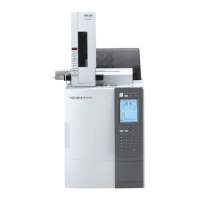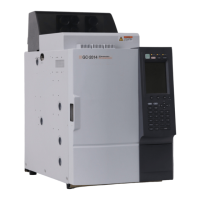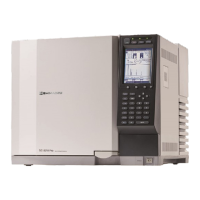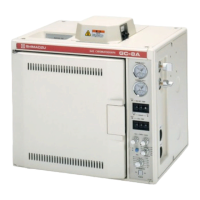3 Basic Operation
3.13
3.
30 FPD-2010
3.13Setting the Ranges and the Attenuation
1.
Analog output
When analog output is connected to a data processing unit, analog signals are provided in two types:
Wide and Linear.
When connecting to the wide range enable data processing unit (analog input of the C-R7A, C-
R7Aplus, and C-R8A), set the analog signal type to [Wide]. When connecting to the other data
processing unit, set the analog signal type to [Linear].
In the case of Wide setting, range selection is not necessary, but if adjustment cannot be made with
the attenuation of the data processing unit (Example: An error peak occurs.), attenuation can be
changed on the setting screen of the detector. Attenuation has five stages from
×1 (2
-0
) to ×2
-4
. When
the numerical value of the index increases by 1, output becomes the half (1/2). Be sure to perform
calibration before use. (Refer to
“2.7 Connecting cables to the external device” in the main unit
instruction manual.)
In the case of linear setting, the range (amplifier magnification) can be set in five stages from ×1(10
0
)
to
×10
-4
. The amplifier magnification is the largest at ×1 range. It is one-tenth (1/10) at ×10
-1
, one-one
hundredth (1/100) at
×10
-2
, one-one thousandth (1/1000) at ×10
-3
, and on- ten thousandth (1/10000) at
×10
-4
.
Accordingly use the smaller ranges (×1 and ×10
-1
) for high sensitivity analysis and the larger ranges
(
×10
-2
, ×10
-3
, and ×10
-4
) for the other cases.
Set the signal range and analog signal type from the [DET] key screen.
2.
Digital output
When the detector is connected digitally to a data processing unit enabling digital connection
(GC
solution or digital input of C-R8A), range selection is not necessary as the digital signals are
always output in
×1.

